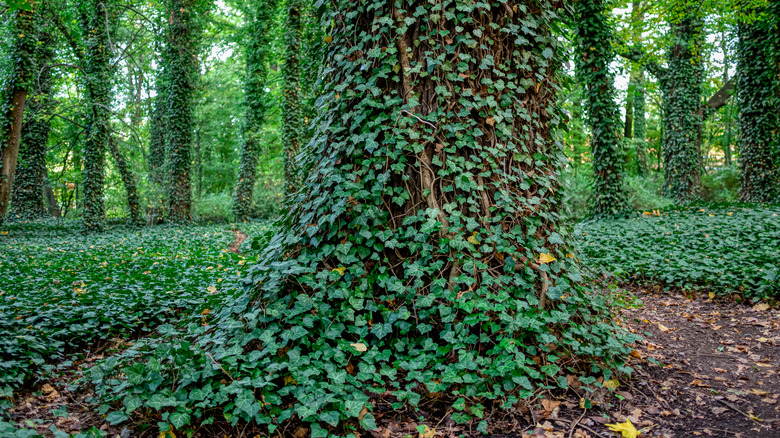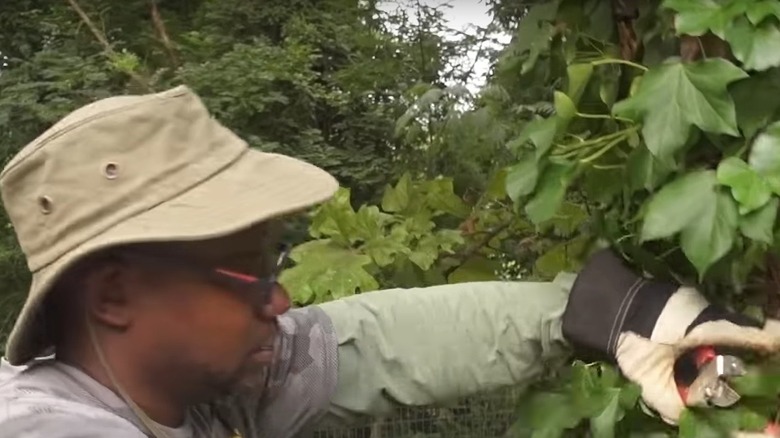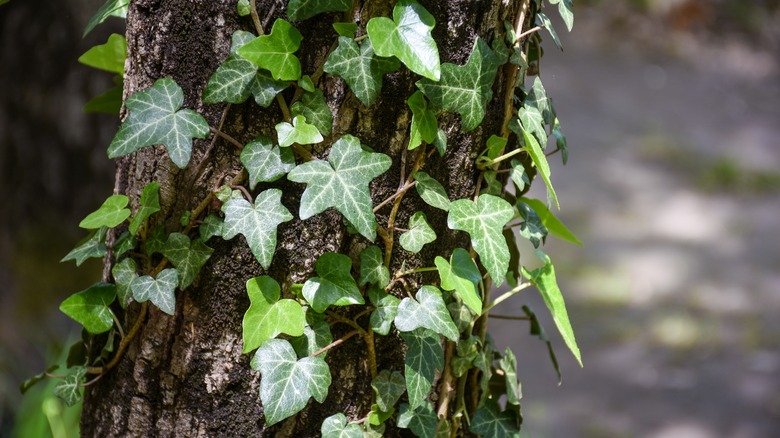Don't Make This Mistake When Removing Invasive Ivy From Your Trees
If you are seeing vines in your garden, such as English ivy, you should learn more about these invasive vines. They can be quite the nuisance plants, covering your home and trees or choking out other plants that you want to thrive in your garden. There are multiple ways to get rid of invasive English ivy if it starts taking over your garden, but you have to be careful while killing this invasive plant if you are removing it from trees. You don't want to violently yank the English ivy from the trees, as you could end up causing more harm than the plant could be causing on its own.
English ivy is dangerous to trees because of the way it attaches itself to the bark. The plants do not dig their roots into the bark. Rather, the root hairs of the plant secrete a substance that binds the stem to the bark, almost like an extremely powerful glue. The rough surface of the bark creates small crevices and fissures that provide extra surface area for the glue to attach, creating a stronger grip.
Should you try to pull the stem, the glue-like substance could tear the bark away. This is potentially fatal to the tree in the worst-case scenario. When it loses its bark by violently pulling the English ivy loose, the tree can become more vulnerable to damage from insects and various diseases, potentially shortening its lifespan.
What is the best way to remove English ivy from a tree?
If you should not pull the English ivy from your trees to kill it, what should you do instead? Removing the stems from the bark safely can become a lengthy process, but following these steps makes the removal as safe as possible for the tree's health.
Start by cutting the stems of all the ivy plants you can see with pruning shears. Cut them a few inches above the ground. Then make another cut of every stem a few feet off the ground. Take care that you do not damage the bark with the shears. Make sure that you are wearing gloves and skin-covering clothing while working on this process. English ivy could cause allergic skin reactions in some people. Additionally, you could have another kind of invasive plant on your trees mixed in, such as poison ivy, and skin exposure could lead to illness for you.
Making two cuts on each stem ensures that you don't miss anything and that all the stems are completely cut. You then need to make certain that they won't grow back. Figure out where the English ivy stems are coming out of the ground. Take a shovel and dig up the roots in these areas. Return to the space regularly to ensure no new spouts are popping up. After the vines in the tree die off, they should loosen and fall away safely. This can take a few years, though.
Do I really need to remove English ivy from my trees?
Because it takes so long to remove invasive English ivy from your trees, you may wonder if you really want to go through this process. Perhaps you like the look of the ivy vines against the bark, and you might consider keeping them there. Unfortunately, having these vines hanging from your tree can cause health problems.
The biggest problem with English ivy growing upward on the tree is that it eventually reaches the canopy. The leaves on the ends of the vines can cut off sunlight to the leaves of the tree, which can eventually kill them and lead to issues for the tree. Additionally, because it keeps its leaves for the entire winter, the English ivy can block sunlight to the new tree leaves as they are trying to grow in the spring, causing further health issues. As another issue, the ivy retains moisture, holding it against the branches, which can weaken them through rot and lead to a greater chance of breakage during wind storms, snow storms, or ice storms.
Even with all this in mind, you shouldn't go for the quick fix to take care of your issue with English ivy by spraying the vine with herbicides. This could cause damage to the leaves on the tree. Additionally, the leaves on the English ivy have a glossy coating that tends to protect them from most DIY weed killers. Cutting the stems is the best option.


